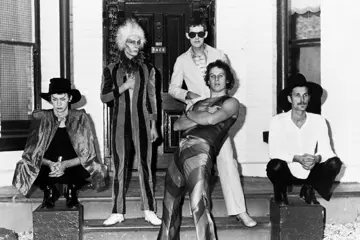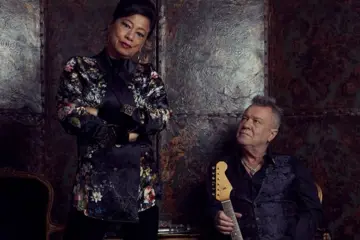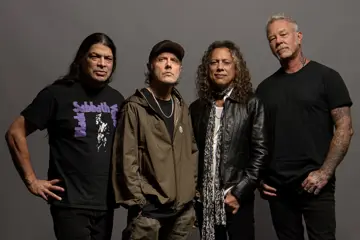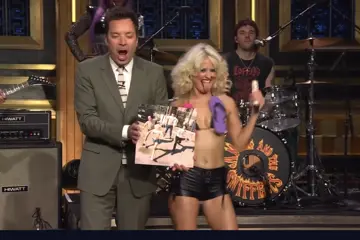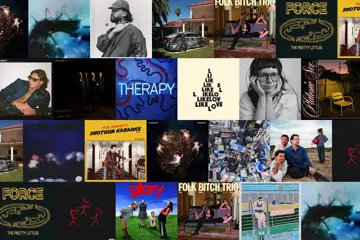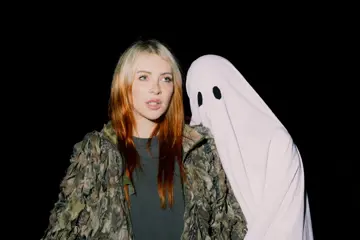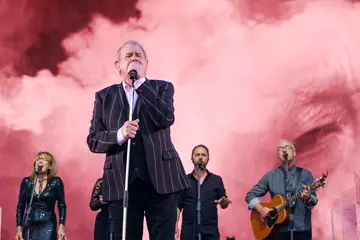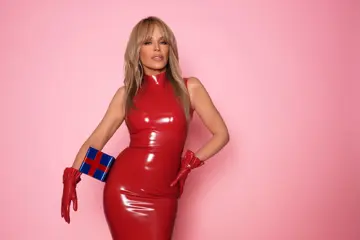 Taylor Swift
Taylor SwiftThe battle for the hearts and wallets of superfans by the music industry is heating up, with record label and artist management executives investing in startups aimed at such superfans.
Financial giant Goldman Sachs, in its Music In The Air report in July, stated superfans represent US$4.2 billion (AU$6.5 billion) by 2030 of the “Total Addressable Market” that is currently untapped.
Until these startups, artists and labels had no idea who and where their superfans were. It certainly didn’t get such information from Spotify, Ticketmaster, YouTube, TikTok and Instagram. Now with an amazing amount of data, effective two-way relationships are created in which the superfan becomes part of the artist’s entire journey rather than just when they tour or release new music.
“This can include shaping albums via votes, calling for track and album title suggestions and co-creating other material with fans as well as offering exclusive experiences and access,” said Tom Gayner, co-founder of one start-ups, Levellr, in Music Week.
English DJ and singer songwriter Fred again.., for instance, got a strong start to an album with listening parties in 18 cities around the world by asking superfans to host them. Some footage in his Bleu video came from what a fan shot of him at a show.
Fave Rave
In the latest venture, Warner Music and Sony Music were among those who invested US$2 million into the AI-powered superfan social media platform Fave. Past and present executives of Google, YouTube, Spotify and Amazon also put money in.
Fave launched in beta in 2021 as a place for fans to hang out, share stories of their idols, analyse song lyrics, enter dance competitions and exchange fan-made merchandise. It became the flashpoint for fans as Taylor Swift’s Swifties, Bruno Mars’ Hooligans United, and the BTS ARMY (fans of K-pop band BTS, whose label HYBE was an early backer of Fave).
“We’ve spent years advocating for superfans,” said its founder Jacquelle Amankonah Horton. “The entertainment business has started to understand just how crucial they are to artists’ longevity, and they are turning to us as the experts.”
Fave has struck “groundbreaking” deals with music companies for them to use its “AI-powered fan intelligence” with billions of audience data points, and its “laser focus on empowering superfans”. This week Fave extended the service to artists and managers with the launch of FanFinder, which helps them identify their superfans. It provides info on who’s listening to their music the longest, who makes fan art and their own merch, who goes to every show on a tour, or who can be tapped to hold listening parties for a new record with other fans.
It pointed out, “The direct connection means the artist team isn’t at the mercy of algorithmically-driven social feeds that reach only 2 percent of followers when the artist is trying to reach their dedicated fans.” Plans are to expand to superfans of sports celebrities and influencers.
As a black woman, Horton is pleased entertainment bosses are now looking past white males for solutions. In her 20s she made her mark as an innovative product manager at Google and YouTube.
Afterparty
The music biz is also eying US superfan engagement platform Afterparty’s new artificial intelligence division, Afterparty.ai. It expands the fan-artist love-in with live streaming, one-on-one 24/7 chats with artist avatars, community events and collectibles.
In September 2023, Afterparty raised a further $5 million to increase fan interaction with AI voice, photo and video messaging capabilities to enable creators “to infinitely scale personalized fan interactions”. Among its early investors were managers of Paris Hilton, The Smashing Pumpkins and DJ superstar Kygo.
Planet, Levellr
Music industry figures also invested in superfan-friendly startups as Planet and Levellr as they tapped investors to help them grow to their next stage.
Planet’s tech lets artists to provide fans with a digital pass for their smartphone that supplies notifications about new music, tours and content, and in time will make it possible to sell tickets directly to fans “The future belongs to artists in control of two-way fan experiences,” declared co-founder James Morrison.
Hot Chip were the first act to utilise Planet, which is developing its digital wallet pass AAA For Artists (with an average interaction rate of 60 percent) offering with management firms as Verdigris (Jungle, Hot Chip), Modest (Niall Horan, Perrie Edwards, Olly Murs, and has a Sydney office) ie:Music (Robbie Williams) and East City (alt-j, Wolf Alice, Ash).
Levellr builds up artist-fan relationships through instant messaging platforms such as Discord (used by more teenagers in the US than Facebook) and Telegram (with 500 million users and among the five most used apps in the world), and gathered financial interest from the music biz because it also enables artists to gather data and create new revenue streams.
We are seeing a move from having a relationship on open networks where an artist would measure success about the number of followers, to closed safe spaces. Levellr’s Gayner pointed out to Music Week that using messaging platforms “is about quality and inviting your most engaged fans into one space. In closed safe spaces, where artists feel they can be more open, direct and transparent, we are seeing them rally fans in a format some artists are less likely to do on open social platforms.”
Warner Music’s Warner Music Experience (WMX) was set up to connect artists and superfans through campaigns outside music. Ed Sheeran’s deal with food giant Kraft Heinz saw him create the hot sauce brand Tingly Ted’s. A Dua Lipa partnership with TikTok saw its users invited to co-create her video for Levitating, while Liam Gallagher’s Clarks footwear recreating its original model at £130 ($248.10 AUD) sold out in minutes.
Universal Music Group, whose research into music streaming subscribers found “about 30 percent are superfans of one or more of our artists” last month (October 20) set up a superstore for superfans in Tokyo’s Harajuku fashion and pop culture district. Over four floors, there are feature dedicated fan experiences, product launches, and retail pop-up shops “while also serving as a platform for artists to express their creative visions and share them with their fans through exciting, unique events.”
How Much Is Enough?
How much can the industry make from superfans? Luminate describes them as those who spend 80 percent more on music than the average American music listener (22 percent more for Millennials, 13 percent more for Gen Z) and 128 percent more likely to buy their records on vinyl, CD or cassette formats.
They also engage with artists in over five different ways including streaming, social media, purchasing physical music or merch, and concerts. Goldman Sachs had a scenario that if 10 percent of superfans (or 2 percent of total streaming subscribers) can be converted to 70 percent by 2030, that would create $4 billion ($6.4 billion) a year.
But some warn that this focus on superfans could be a negative in the long run. After a while, these superfans might run out of money. Then what? It would be smarter to also encourage fans in lower tiers to also increase their spend.

